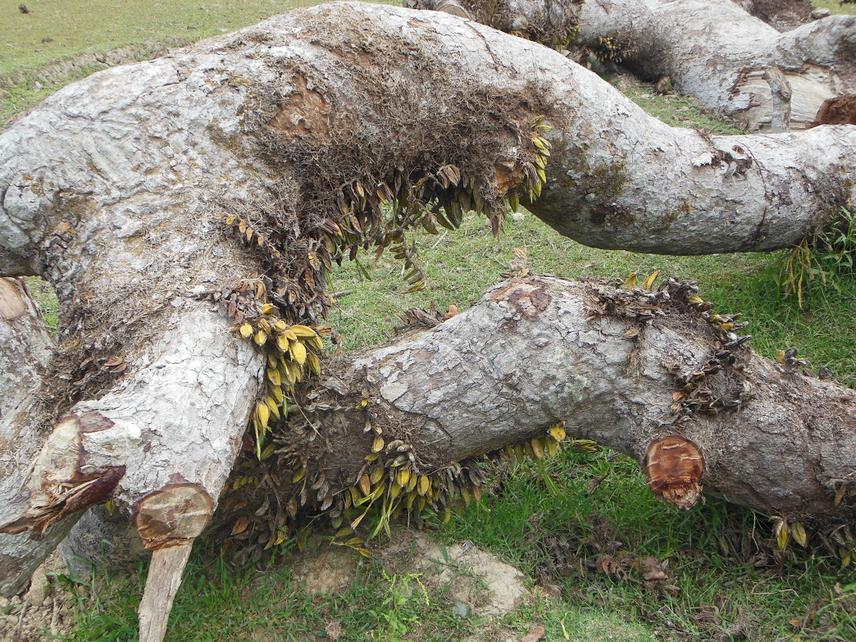Shovan Dattagupta
This research and application work will estimate present population status, habitat characterisation and initiate longstanding conservation strategy and action on critically endangered tree species Dipterocarpus turbinatus

D.turbinatus falling also destroy associated orchid flora.
Northeast India is part of two important biodiversity hotspots of the world, viz Himalaya biodiversity hotspot and Indo-Burma biodiversity hotspot. Cachar district of Assam, Northeast India is a part of Indo-Burma biodiversity hotspot with high degree of diversity. Dipterocarpus turbinatus, a critically endangered tree species (The IUCN red list of threatened species. Version 2014.1), was once abundant in the forest of Cachar district, Assam, Northeast India (Hunter 1876, Champion and Seth 1968). This species and its habitat was largely been obliterated since 19th century because of its high commercial demand of timber, in addition to that enhancement of anthropogenic activity, establishment and expansion of monoculture particularly tea cultivation since mid of 19th century by converting forest land to agricultural land. Regrettably no serious initiative has been taken by any institution till today to take practical strategy and action to conserve this critically endangered tree species and has led to the edge of extinction.
Project work aims to evaluate population estimation of D. turbinatus and its phenology in the protected forest of Cachar district, Northeast India with its floristic composition. Population estimation attribute of the species will help us to understand and outline actual position of the species in protected forest ecosystem of Cachar district. As the species is sporadic, scanty and sometimes restricted to specific habitat (patches) (Dattagupta & Sen 2014), efforts will be made to study and record geographical features of the patches such as elevations, slopes, contours, total area, coordinate to develop patch characterisation data of the forest belt dominated with D. turbinatus.
Data generated from the study will help us and future researcher to develop conservation protocol for this important tree species. In addition to that as a part of the action work, awareness programme and training programme for school students and forest field staff respectively will be arranged at the later part of the project to disseminate actual information generated from the field and site specific strategy for conservation of D.turbinatus. This research work will initiated to develop long standing strategy and action on conservation of D. turbinatus, an important component of biodiversity heritage of Northeast India in particular and Indo-Burma Biodiversity hot spot in general .